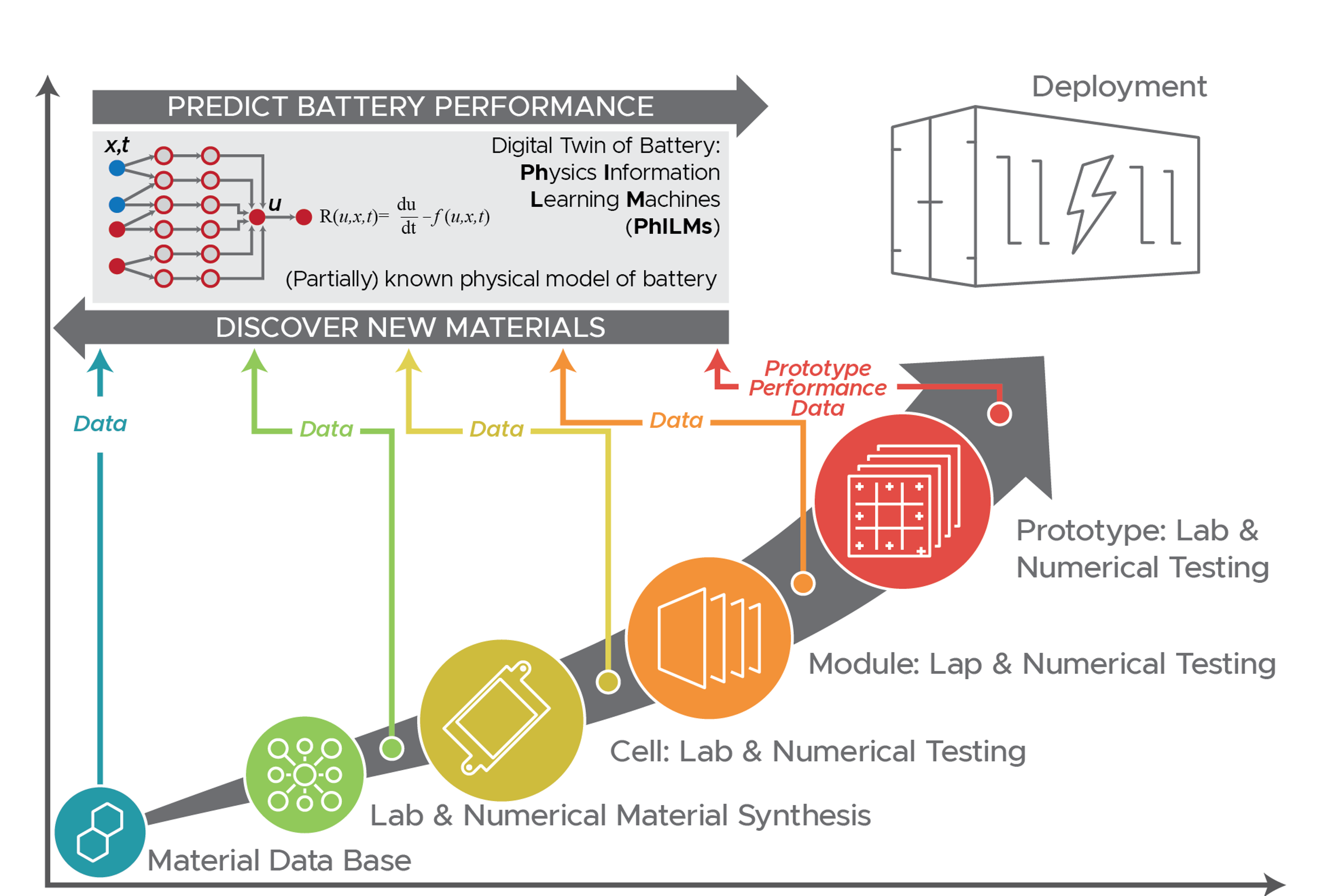Outcomes
Outcomes
Pioneer Digital Twin Approach
Pioneer Digital Twin Approach
PNNL’s multidisciplinary ESMI team is focused on pioneering the digital twin approach to accelerate design of complex material systems (batteries initially) through physics-informed, data-based models that integrate experimentation and modeling across traditionally siloed scales and domains.
Specifically, the team is pursuing the following scientific outcomes:
- Achieve predictive material design by establishing correlations between material structure and properties
- Enable rapid prototyping validation by linking material properties and device performance across both temporal and spatial scales
- Bridge scales from atomistic to device for rapid new materials discovery and device performance optimization through the digital twin.
The ESMI team’s vision for digital engineering—of which the digital twin/digital thread is foundational—includes an integrated workflow environment, from materials discovery to device validation, utilizing coupled digital representations through all development stages. These coupled representations are predicated on a unified, coordinated, refreshed, and holistic database architecture. The set of digital representations and the data architecture constitute a “single source of truth,” enabling efficient, accelerated innovation utilizing the latest developments from data-informed modeling approaches.

The science and technology deliverables for ESMI include the following:
- Novel materials with targeted functionalities
- Digital device platforms
- Advanced data, analytic tools, and algorithms
- Advanced simulation tools.
Applied Outcomes
To demonstrate the new approach, ESMI is creating a redox flow battery digital twin using predictive redox molecule design and cross-scale validation that link molecular structure and functionality with performance. Redox flow battery technology is an ideal candidate for both ESMI research and development and grid-scale energy storage applications. The key outcome of this initiative will be the creation of enduring capabilities and methodologies for the discovery and validation of new functional materials for energy applications. These capabilities will be built on a predictive understanding that will dramatically decrease the time needed to move from discovery of materials to deployment of a technology.